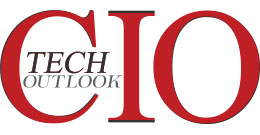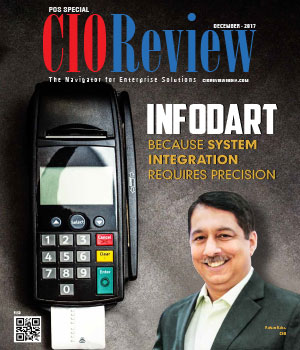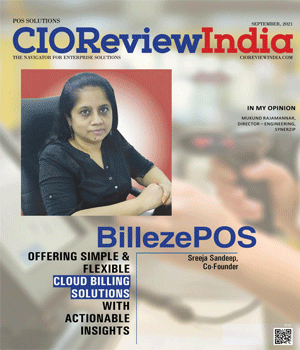
The Benefits of Relationship Mapping in Business
CIOTechOutlook Team | Tuesday, 03 June 2025, 05:03 IST
 In today's competitive business landscape, the power of strong relationships can't be overstated. They are the bedrock of customer loyalty, strategic partnerships, and seamless internal operations. Understanding and managing these complex webs of connections can be overwhelming, which is where relationship mapping comes into play. This strategic tool offers countless benefits, from improving customer engagement to driving sales. Below, we'll delve into the nuances of relationship mapping and explain why it's a critical component for business success.
In today's competitive business landscape, the power of strong relationships can't be overstated. They are the bedrock of customer loyalty, strategic partnerships, and seamless internal operations. Understanding and managing these complex webs of connections can be overwhelming, which is where relationship mapping comes into play. This strategic tool offers countless benefits, from improving customer engagement to driving sales. Below, we'll delve into the nuances of relationship mapping and explain why it's a critical component for business success.
Exploring the Concept of Relationship Mapping in Business

Relationship mapping is a visual tool organizations use to chart and analyze the connections between individuals within and outside the company. It provides insight into the dynamics of relationships, including the levels of influence, communication channels, and network nodes that may exist. Understanding these factors allows businesses to effectively engage stakeholders and tailor their approach to meet specific objectives.
The relationship mapping process can vary, but it often includes identifying key players, assessing the strengths of existing relationships, and detecting potential growth opportunities. By visualizing these relationships, businesses can better comprehend how individuals and groups interact, highlighting areas for improvement, possible risks, and room for development.
This relationship mapping could include customers, suppliers, partners, and competitors. By understanding how these entities are related, companies can anticipate market changes more effectively and adapt their strategies accordingly. This leads to a more resilient business model in the face of industry fluctuations.
Utilizing advanced tools and software can significantly enhance the mapping process. These platforms allow for real-time updates, integration with existing customer relationship management systems, and sharing across departments, providing a unified view of the company's relationship landscape.
Enhancing Customer Understanding Through Relationship Mapping

The adage "knowledge is power" rings particularly true regarding customer relationships. Relationship mapping can reveal not just who the customers are but also how they are interconnected through various aspects such as preferences, behaviors, and social networks. This leads to a deeper understanding of customer segments and facilitates personalized marketing strategies.
By leveraging the insights from relationship maps, businesses can anticipate customer needs more accurately and craft tailored solutions. It paves the way for proactive customer service, where challenges are addressed before they escalate, and satisfaction is consistently monitored and improved upon.
The data collected can also shed light on influential customers who might affect others' purchase decisions. This allows for targeted engagement strategies, encouraging these key customers to become brand ambassadors who spread positive word-of-mouth about the company.
Moreover, relationship mapping aids in identifying gaps in customer service or areas where competition might be gaining an edge. Companies can then strategize how to close those gaps and leverage their strengths to create a more robust customer base.
Streamlining Communication and Collaboration with Relationship Mapping
Effective communication is critical to organizational success, and relationship mapping can serve as a conduit for enhancing communication flows. It identifies the main contact points within and between teams and can expose potential bottlenecks or breakdowns in communication channels.
Furthermore, relationship mapping encourages collaboration by transparently identifying the multiple touchpoints an individual or a project may have across various departments. It can facilitate cross-functional team efforts by providing a clear roadmap of how different units are connected and how they can work together to achieve common goals.
Internal networking is another aspect that benefits from relationship mapping. Employees can identify mentors, peers, and subordinates who can participate in their professional development. This can boost employee engagement and retention rates as staff members feel more integrated into the business fabric.
Altogether, relationship mapping offers businesses a strategic advantage by clarifying internal and external connections, enhancing communication, and revealing key customer insights. This comprehensive understanding fosters stronger collaboration, personalized customer engagement, and improved adaptability in a competitive marketplace.
CIO Viewpoint
Why Foolproof Facial Recognition Is Key Against...
By Joseph Sudheer Thumma, Global CEO & MD, Magellanic Cloud
National Technology Day 2025: Powering Progress...
By CIOTech Outlook Team
Aligning IT Roadmap with Business Objectives: A...
By Subhash singh Punjabi, CISO & Head Enterprise Architecture, Deepak Fertilisers & Petrochemicals Corporation Ltd
CXO Insights
Why Merchants are Making Payment Data Security...
By Sunil Khosla, President- Digital Business, India Transact Services Limited
DIGITAL TRANSFORMATION - What Successful...
By Vineet Aggarwal, Head IT, SRL Ltd.
Evolution Of Point Of Sale Systems








